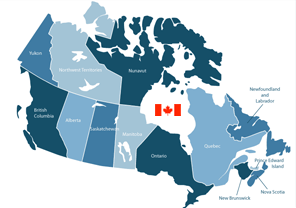- Migraine and the Menstrual Cycle
- Migraine and Oral Contraceptives
- Migraine and Pregnancy
- Migraine and Menopause
This information is intended for patients, nurses and persons who have some knowledge of medical education. The same topics are simplified in our new book Headaches That Persist – order your copy here.
By Dr. Rose Giammarco, M.D., F.R.C.P. (C)
Neurologist with Special Interest in Headache
Migraine in Women
The link between migraine and female sex hormones is well established. In prepubertal children, the incidence of migraine is equal in boys and girls. However, with menarche and throughout childbearing years, the incidence of migraine in women becomes two or three times that of men. Migraine may be affected by menstrual cycles, pregnancy, oral contraceptives, menopause and hormone replacement therapy. There is an overall decline postmenopausally.
Along with standard antimigraine therapy, manipulation and stabilization of fluctuating and falling estrogen levels can be considered in order to create a more stable hormonal milieu.
Migraine and the Menstrual Cycle
Among many other well recognized triggers, menstruation is a very definite trigger. Menstrually associated migraine occurs in up to sixty percent of female migraineurs. True menstrual migraine occurs in fourteen percent with the headache occurring exclusively at the time of menses. Although the true definition of menstrual migraine continues to be on that is not widely accepted, there is agreement that menstrual migraine can occur prior to the onset or during menstruation. Generally accepted criteria are not available.
Migraine occurring only during menses is less common, with an incidence of only fourteen percent in one study. Menstrually associated migraine can occur during menses in addition to other times of the month.
Theories of pathogenesis have centered on fluctuating estrogen and progesterone levels. In 1972 Somerville reported that headache occurred as a result of falling estrogen levels prior to menstruation. In a small study when estrogen was given premenstrually, menstruation occurred on schedule, but the onset of the headache was delayed. He therefore concluded that the estrogen withdrawal could be the migraine trigger.
Silberstein has suggested three mechanisms in which fluctuating estrogen levels may cause migraine attacks. Estrogen sensitive changes in central opioid tone have been postulated to occur in women with menstrual migraine; central serotonin dysmodulation; estrogen withdrawal may affect both hypothalamus and uterus mediated by increased prostaglandin.
Treatment of menstrual migraine should be similar to standard migraine management. Initial approach should address non-pharmacological management including the use of a diary to help confirm and identify triggers, along with patterns of headaches in relation to menstrual cycles, ovulation and oral contraceptive use. If headache associated with menstruation occurs with predictability, avoidance of triggers during times of fluctuating estrogen levels may help to decrease the occurrence of these headaches during a vulnerable time. Nonsteroidal antiinflammatories may be effective abortive agents by way of their aniprostaglandin and analgesic effects. If the headaches are predictable in their occurrence, nonsteroidals may in some cases prevent the headache occurrence. Most available NSAIDS (nonsteroidal antiinflamatories) can be used effectively; for example Naproxen 550 mgm twice daily, taken one to two days prior to the onset (beginning) of menses and continued for five days. Sumatriptan (Imitrex) 25 milligrams three times daily and Dihydroergotamine (DHE) can be used prophylatically in this manner. Naratriptan (Amerge) and Frovatriptan (Frova) are also used prophylactically.
Failing the above approaches, manipulation and stabilization of the hormonal fluctuations is an option. In theory, if falling estrogen levels prior to menstruation is the trigger for menstrual migraine, then estrogen replacement should help to prevent it. A 100 microgram estradiol patch applied prior to the anticipated onset of the headache may prevent the migraine without disturbing the menstrual cycle. The timing of application varies, but should be applied prior to the expected headache. Supplementation should not exceed greater than one week, in order to avoid affecting menses, according to Fettes.
Bromocriptine (parlodel) 2.5 mg three times daily was studied in an open trial. Herzog demonstrated a twenty-five percent reduction in headache in seventy-five percent of women.
Neither hysterectomy nor oopherectomy has been proven to be effective in treatment of menstrual migraine. There are no long term controlled studies to warrant this approach.
Migraine and Oral Contraceptives
Migraine and oral contraceptive use continues to be a source of controversy. Oral contraceptive initiation may worsen or change the pre-existing pattern of migraine. In a small percentage of women, there may be improvement or no change at all. The concern of oral contraceptive use is twofold; how will it affect the migraine severity and frequency; and what is the added risk of stroke to the migraineur on the pill. Migraine may be affected by the pill in one of five ways; attacks may begin for the first time; pre-existing migraine may worsen; there may be an alteration in the pattern; migraine may improve and finally there may be no change. Some studies have suggested there is no change in headache with the oral contraceptive.
Of more concern is the issue of added stroke risk in the migraine sufferer on the pill. Becker suggests viewing risk factors as additive. The incidence of stroke in non-migraineus women aged twenty-four to thirty-four, not on the pill, is 1.3 per 100,000 women years. Whereas women with migraine aged thirty-five to forty-four on the pill, have an increased incidence of up to 78 per 100,000 women years. The data presented in studies assessing risk factors in stroke should be interpreted with caution. The decision to use oral contraceptives in a migraineur needs to be considered on an individual basis. Patients should be informed of potential risk of stroke and other stroke risk factors including hypertension, diabetes, age, obesity and smoking need to be considered.
If the decision to use OCP (oral contraceptives) is made then careful follow-up is recommended. Patients should be monitored for a change in frequency or severity of headache, and for the development of a change in pattern of headache, such as development of aura with headache. If these occur, discontinuation of the OCP would be advised.
Treatment of migraine while on the OCP would be similar to that of regular migraine during the month. When headache occurs on the ‘off cycle’ treatment may resemble that of menstrual migraine. (see menstrual migraine). Migraine attacks may be more severe, of longer duration and may be more difficult to treat during the time of the OCP. Therapies could include standard migraine treatments including triptans and ergotamine. As a menstrual migraine NSAID/ergots/and triptans can be given prophylactically (preventatively) the day prior to the anticipated headache and continued for four or five days. Low dose estrogen patch (100 mcg) can be applied on the last day of the OCP and continued for four or five days.
Migraine and Pregnancy
Migraines may be affected in a variety of ways by pregnancy; they may increase, diminish, or remain unchanged. Headaches may also appear for the first time during pregnancy, usually during the first trimester, and typically subside in the second and third trimesters. Often migraines recur in the postpartum period and may be associated with depression. Frequently women whose migraines began with menarche are linked to menses may experience relief of headache during pregnancy.
Relief from migraine in pregnancy is thought to occur as a result of sustained or slowly rising estrogen levels. Although migraine relief occurs in the majority of pregnant migraineurs, the mechanism of worsening headache in pregnancy is poorly understood.
In the immediate postpartum period, greater than fifty percent of migraine sufferers will experience headache recurrence. The abrupt drop in estrogen levels following delivery is thought to be responsible.
When headaches occur during pregnancy, the possibility of cerebral vein thrombosis (clot) and subarachnoid hemorrhage should be considered in the differential diagnoses, especially if the headaches are sudden and severe in their onset. Once more sinister causes have been eliminated, treatment of migraine in pregnancy raises a dilemma, owing to the risk of teratogenic effects and potential effects on the course of the pregnancy itself. The physician should consult and work closely with the obstetrician in determining appropriate therapies. Ideally, nonpharmacologic approaches should be considered first, including elimination of triggers, adoption of a proper diet, behaviour modification, relaxation therapies, ice packs, and massage. If the headache frequency and severity increase to the extent where the baby’s well-being is being threatened, medical management should be initiated. If dehydration has occurred secondary to excessive vomiting, fluid replacement should be given. The patient must be told of any potential risk associated with the drugs prior to their administration.
Acetaminophen can usually be given without teratogenic effects; however narcotics and codeine should be avoided and used with caution to prevent potential addiction in the baby and the mother. Aspirin should be avoided due to its effect on coagulation in both fetus and mother in later stages of pregnancy. NSAIDS may inhibit labor. Antimigraine therapy including triptans and ergots are contraindicated in pregnancy. If preventative medications are indicated for refractory headache with associated vomiting and severe dehydration, then a low dose betablocker or tricyclic antidepressant could be tried. Although there have been reports of intrauterine growth retardation there is no known teratogenic effects associated with betablockers.
Migraine and Menopause
In women with migraine linked to their menstrual cycles there will likely be an improvement in their headaches postmenopausally. However, in the perimenopausal years there will be an exacerbation in their headaches before they improve. Once again, abrupt drops and fluctuations in estrogen levels during the perimenopause are left to be responsible for the change in headache pattewrn. With the more stable low estrogen levels postmenopausally, the tendency of migraine is to improve.
Continuous hormone replacement can be initiated to stabilize the hormonal milieu. If HRT (hormone replacement therapy) is considered for the treatment of perimenopausal migraine, contradictions need to be considered. These include, a history of thrombosis (clot), undiagnosed vaginal bleeding, a history of endometrial cancer or breast cancer, and liver disease. Benefits of HRT continue to expand, including cardiovascular protection, osteoporosis prevention and possibly neuroprotective benefits in Alzheimer type dementia. These risks and benefits need to be reviewed and applied to the individual patient.
For most women with an intact uterus, continuous combination estrogen/progesterone combinations would be the first choice. Estrogen skin patches can provide a continuous low dose replacement and may be less likely to cause headache than cyclic HRT Fettes suggests oral preparations such as Premarin, Ogen medroxyprogesterone acetate 2.5 once a day or micronized progesterone (Prometrium) 100 mgm at bedtime is recommended.
Studies comparing HRT and their efforts on headaches are limited. If a patient’s migraines increase while on HRT of one-type, consideration of decreasing the dose, altering the route or preparation could be considered. If HRT is contraindicated or unsuccessful in treatment of perimenopausal migraine, the usual migraine prophylaxis and acute therapies should be tried either in conjunction with or as an alternative to HRT.
By Dr. Rose Giammarco, M.D., F.R.C.P. (C)
Neurologist with Special Interest in Headache
McMaster University
Associate Clinical Professor
Hamilton Health Sciences
Staff Neurologist
St. Joseph’s Healthcare
Director – Hamilton Headache Clinic
Hamilton, Ontario, Canada
Becker WJ. Migraine and Oral Contraceptives. Canadian Journal of Neurological Sciences. 1997;24: p16-21
Fettes Ivey. Migraine and the Menopause. Journal SOGC August 2000
Loder, Elizabeth. Headache and Oral Contraceptive Use. Seminars in Headache Management. Sex Hormones and Headache. Vol. 3 Number 2 June 1998. p9-12
Loder, Elizabeth. Migraine and Menstruation. Journal SOGC. Vol. 22 number 7. July 2000, p512-517
Silberstein S. Menstrual Migraine Seminars in Headache Management. Vol. 3, Number 2. June 1998, p 2-8
Silberstein S. Migraine and Pregnancy. Journal SOGC. Sept. 2000

